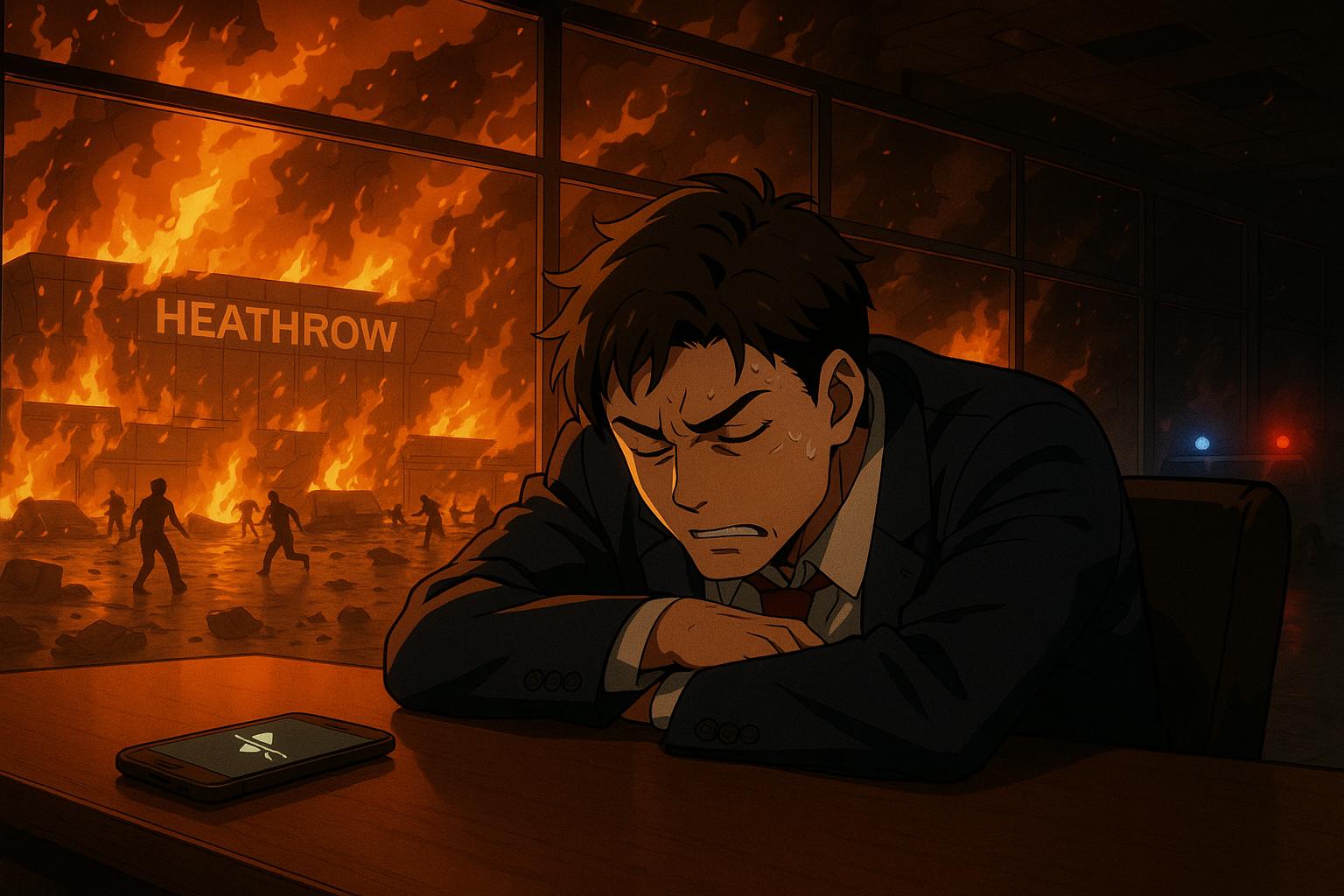The fallout from a significant fire at Heathrow Airport's electrical substation has raised pressing concerns about the resilience and management of one of the world’s busiest transport hubs. A recent report into the incident, which occurred overnight from March 20 to March 21, revealed that CEO Thomas Woldbye was unreachable during the crisis as his phone was inadvertently left on silent while he slept. This oversight not only delayed his response but also highlighted serious issues regarding communication protocols during emergencies.
The Kelly Review, a detailed investigation into the event, concluded that Woldbye, whose annual salary exceeds £3 million, was called multiple times by Chief Operating Officer Javier Echave without ever responding. The review noted that Woldbye became aware of the situation only at 6:45 am, more than seven hours after the fire began at 11:20 pm. Echave, acting in the interim, activated emergency procedures, leading to the closure of the airport, which affected more than 200,000 passengers and resulted in the cancellation of over 1,300 flights.
Leading airline executives were swift to declare their disbelief at the lapse in communication. Shai Weiss, CEO of Virgin Atlantic, stated emphatically, "The last time I put my phone on silent when running an airline was – never." His comments underscored a broader sentiment within the industry that prioritising safety and communication is paramount in such high-stakes situations. Weiss has since called for Heathrow to begin compensating airlines for the economic fallout of the shutdown, which is estimated to have cost the UK upwards of £4.8 million in lost tourism alone.
Further complicating matters, the report has prompted questions surrounding Heathrow's preparedness for such an event, especially given that airlines had warned of power supply vulnerabilities shortly before the incident. Prior concerns, stemming from thefts that impacted runway operations, brought the issue of infrastructural resilience to the fore; however, Heathrow asserted that these prior incidents were unrelated to the fire, which remains under investigation. Preliminary findings linked the fire to a fault in the transformer’s cooling system, though there is no evidence suggesting foul play.
Although the Kelly Review defended the decision to close the airport as necessary for safety, it also issued 28 recommendations aimed at bolstering future resilience. These include enhancing relationships with power distribution partners and exploring the installation of additional backup generators. The review commended Heathrow's overall emergency response but noted that issues, such as a lack of emergency lighting in terminals, hindered operations during the power outage, forcing security personnel to rely on their mobile phone torches to navigate.
The incident, which spanned almost 24 hours, has drawn attention not just to Heathrow but to the UK's broader energy infrastructure resilience, with critics suggesting that the incident exposes vulnerabilities in a critical national asset. Willie Walsh, CEO of the International Air Transport Association, described the situation as emblematic of the UK's weaknesses under current governance, further entrenching the discourse on infrastructural reliability in light of future emergencies.
As the investigations continue, including an interim report from the National Energy System Operator, which is expected to offer further insights in June, stakeholders are hopeful that the findings will illuminate the underlying causes of the fire. With this, there may be pertinent lessons that could preempt future crises not only at Heathrow but across the UK's various critical infrastructures.
The way forward for Heathrow lies not only in addressing these immediate concerns but in ensuring that its leadership structure and emergency protocols evolve to safeguard against potential future disruptions.
Reference Map:
Source: Noah Wire Services
